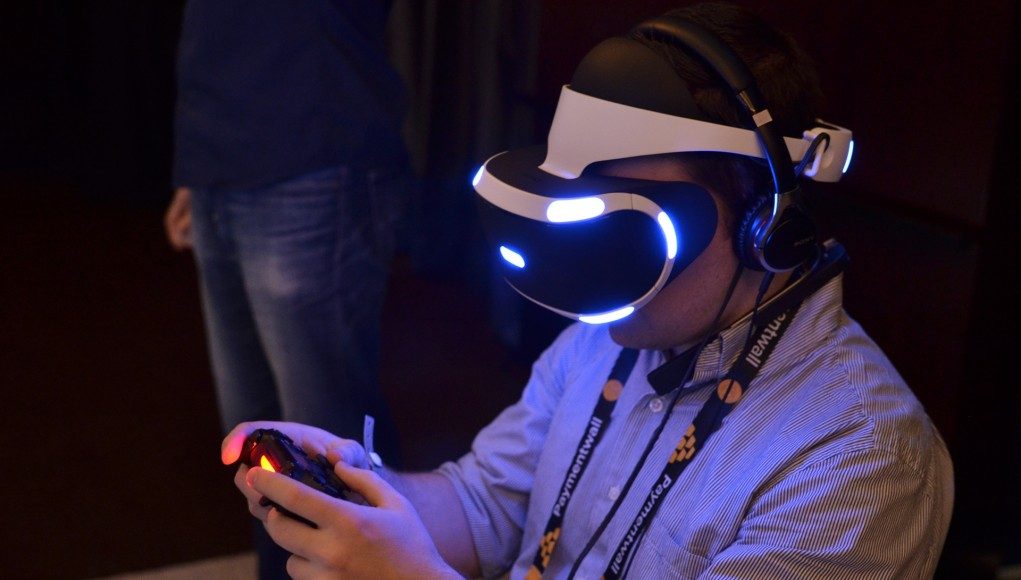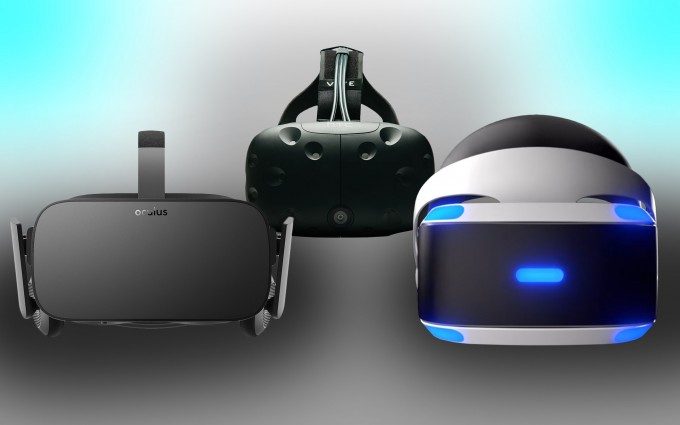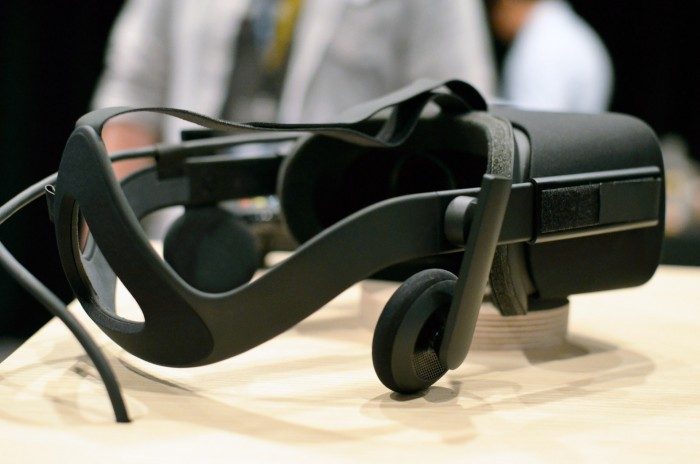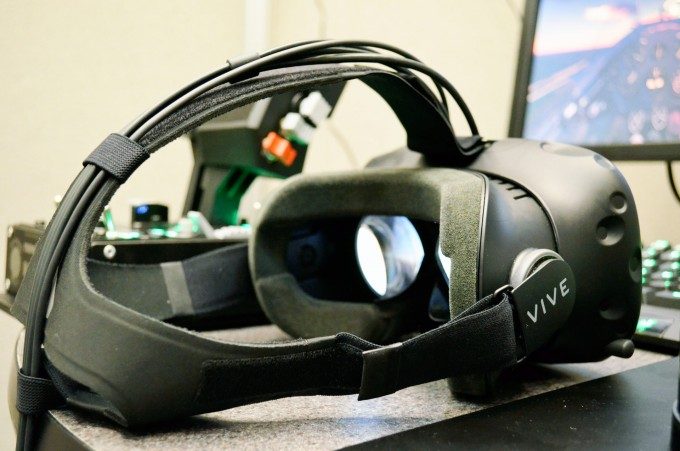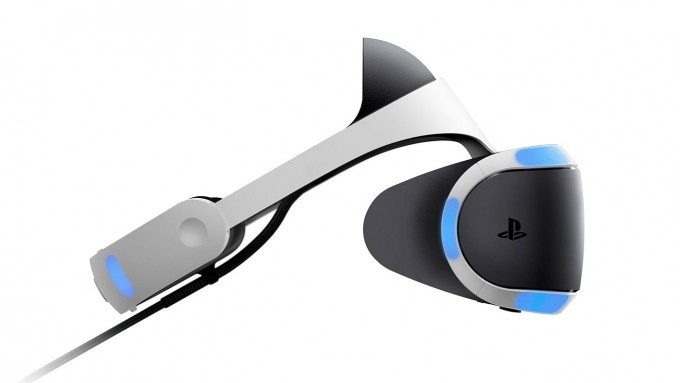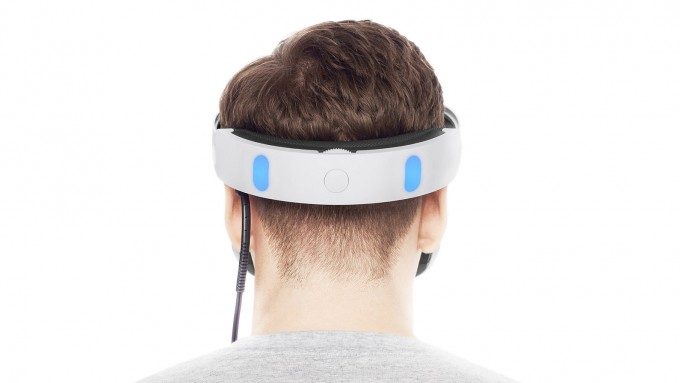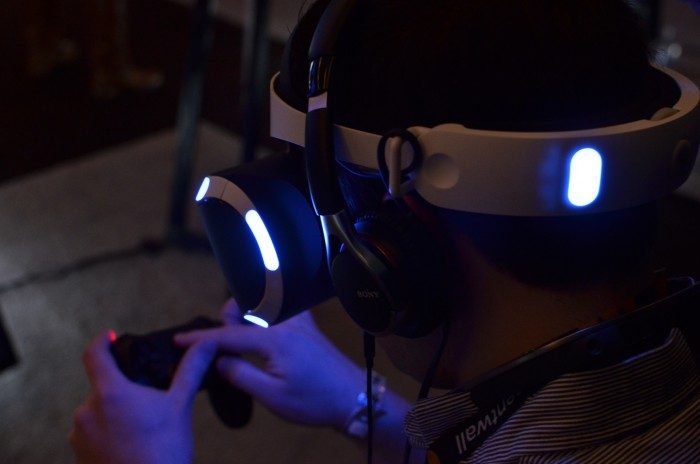Final specs show that PlayStation VR is the heaviest headset among the Oculus Rift and HTC Vive, but its smart design will have you wondering how much weight can actually tell you about comfort.
I’ve had my head in every iteration of PlayStation VR since it was announced all the way back in 2014 (back then called ‘Project Morpheus’). While the headset has changed and improved over time, one thing that’s stayed surprisingly consistent is its ergonomic design. Sony somehow managed to nail this right out of the gate. It makes sense, after all, given that the company has quite an extensive history in the field of head mounted displays, dating back at least as far as 1993.
A Different Way to Wear
PlayStation VR uses a head mount system that’s quite different than the Rift or the Vive, and even with the final official specs putting PSVR at 610 grams, it’s a surprising delight to wear.
At 470 grams, the Rift relies on a semi-rigid strut and strap system that grips the crown of your head, to which it transfers much of the display enclosure’s weight via a strap running over the top of your head. The display enclosure then rests somewhat on your brow, with just a bit of pressure on your cheeks.
At 555 grams, the Vive takes a straightforward goggle-style approach (much like the Rift development kits) where flexible straps are pulled tightly to squeeze the unit against your face with force applied from the back of your head. Like ski goggles, the pressure from the headset is felt largely in the brow and cheek areas surrounding your eyes.
Both the Rift and Vive end up putting a fair amount of pressure on your face. This isn’t ideal as the face is filled with muscles that like to move, especially in the cheeks and around the eyes. They don’t quite like bearing pressure either; poor placement of a headset on your face can hold the muscles in non-resting positions which is notably uncomfortable, sometimes leading to twitching. If you’ve ever squinted or opened your eyes widely while putting on one of these headsets, you’ll immediately notice the discomfort of having the muscles in your face unable to reach their natural resting position.
Sony’s approach is very different. PlayStation VR uses a ‘hanging’ style display enclosure which doesn’t rely at all on pressure from your face to keep it in place. Instead, the display hangs down from the structure of the headset while transferring a great majority of the weight to the top of your forehead (which, if you poke around up there a bit, you’ll notice has very little muscle compared to your face). From your forehead, the circle of the headset’s body wraps low behind your head to act as an anchor for the forehead section.
Accessible Adjustments Mean Optimal Use
With the headset on, you won’t be playing with unseen velcro straps to adjust it. There’s just one fit adjustment and it’s a ratcheting wheel on the back of the head mount which is effortless to find and turn while wearing the headset (compare that to three individual strap adjustments on the Rift and Vive). Crank this to the right to tighten the headset’s grip against your forehead. When you’re done, a button right near the crank knob quick-releases all the tightening you’ve done and allows you to remove the headset in a snap.
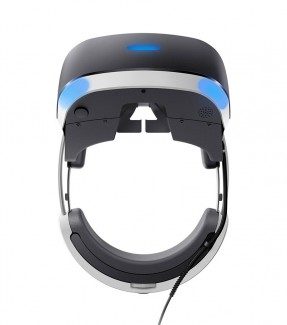 Another extremely easy adjustment on PSVR is the eye-to-lens distance. This is helpful not only for people with glasses, but for easily dialing in the maximum field of view for each user. Upon donning the headset, there’s a button underneath the right side of the display enclosure; press it in and you are free to move the display enclosure forward or backward as you see fit, bringing the lenses closer to your eyes.
Another extremely easy adjustment on PSVR is the eye-to-lens distance. This is helpful not only for people with glasses, but for easily dialing in the maximum field of view for each user. Upon donning the headset, there’s a button underneath the right side of the display enclosure; press it in and you are free to move the display enclosure forward or backward as you see fit, bringing the lenses closer to your eyes.
The ease of this adjustment, and its range, is hugely important because it’s so quick and simple that user’s are likely to do it every time they wear the headset, meaning a maximum field of view on a more consistent basis from one user to the next. While the HTC Vive has (to our knoweldge) technically the largest field of view of the big three headsets, my bet is a majority of those who don’t know the on-paper field of view specs would rank PSVR as the largest field of view, simply because it’s so easy for users to optimize their individual field of view with this adjustment.
The Vive also has a lens-to-eye adjustment, but it doesn’t seem to be able to move as close to your eyes to push the field of view to its maximum. The adjustment is also a little harder to do and is actually somewhat well hidden, to the point that few people I’ve met actually know or remember it exists.
Then there’s the Rift which, sadly, doesn’t have any eye-to-lens adjustment. It was supposed to ship with varying foam spacers to achieve the same effect, but then didn’t.
Impressive But Not Perfect
PlayStation VR is impressively comfortable and is only made moreso thanks to easy and effective adjustments, but it’s still missing a few key bits we’d like to see.
The big number one is built-in headphones. Like the Vive, PSVR asks users to bring their own headphones when they want to step into VR. But reaching around on your desk for a separate pair of headphones after you’ve put on the headset is one extra annoyance that we’d prefer not be between us and getting lost in a virtual world. The Rift is clearly ahead here, with its small and effective built-in headphones that hang right off the side struts.
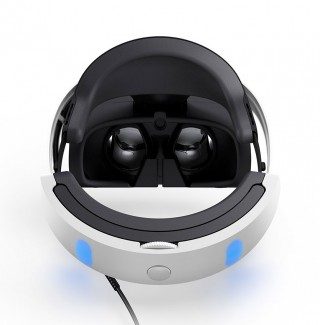 Number two—a missing IPD adjustment—may not be a big deal, but only time will tell. IPD is the distance between your eyes, and both the Vive and the Rift offer a corresponding adjustment to change the distance between the lenses. In an ideal world, you want the lenses to be directly centered with each eye for the sharpest and most comfortable viewing. Sony says that they’ve made the PSVR lenses in such a way that it renders the need for an IPD adjustment null, but that may only be true if you fall within a certain IPD range.
Number two—a missing IPD adjustment—may not be a big deal, but only time will tell. IPD is the distance between your eyes, and both the Vive and the Rift offer a corresponding adjustment to change the distance between the lenses. In an ideal world, you want the lenses to be directly centered with each eye for the sharpest and most comfortable viewing. Sony says that they’ve made the PSVR lenses in such a way that it renders the need for an IPD adjustment null, but that may only be true if you fall within a certain IPD range.
Don’t be deceived by its weight; PlayStation VR is a smartly designed VR headset which brings strong design lessons to the market for others to learn from. We’ve already seen the introduction of Intel’s Project Alloy, which uses a similar hanging-style mount, and we’d be happy to see that trend continue to spread.

